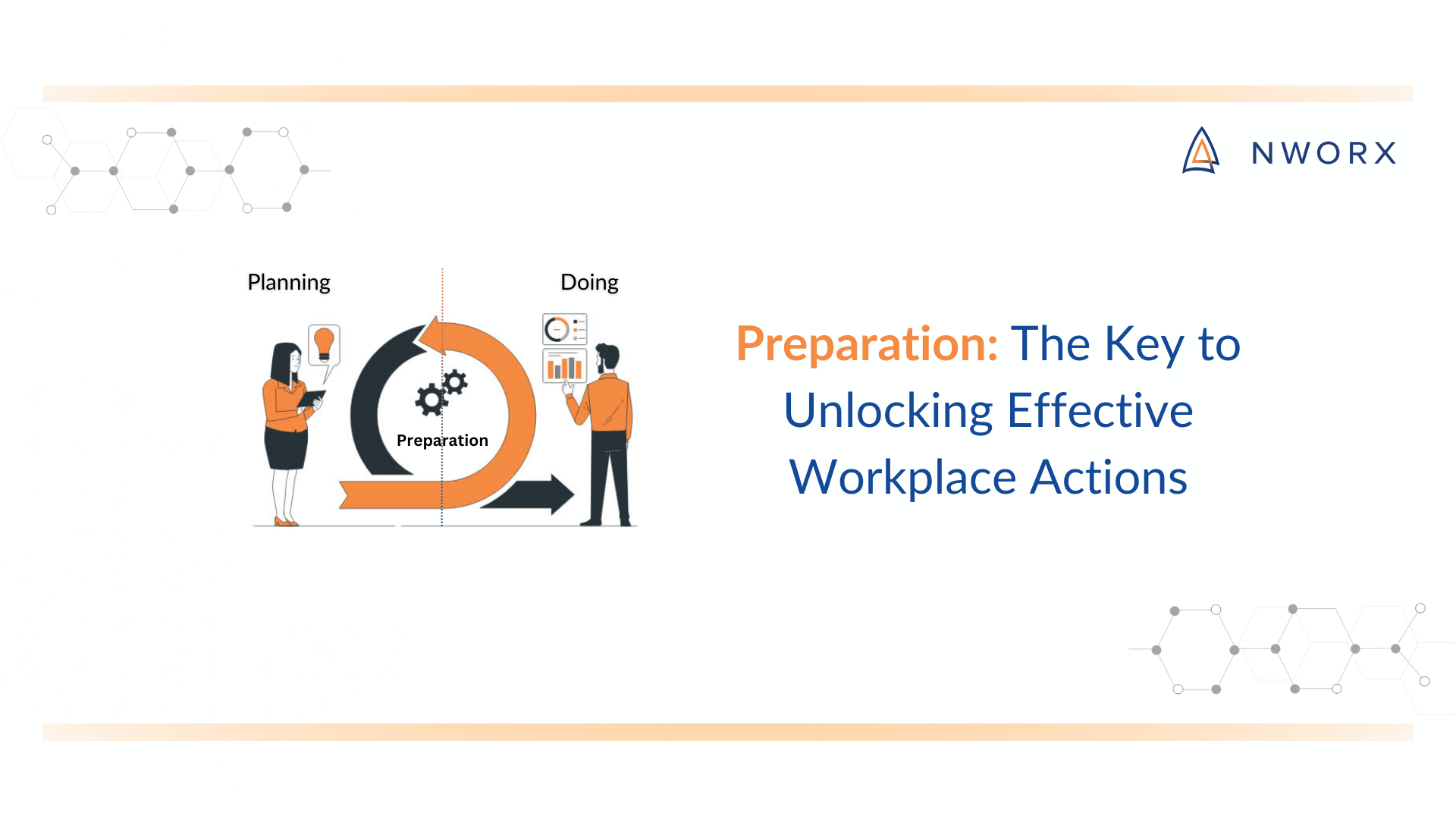One significant issue often observed in traditional training programs is that the motivation behind learning may not always be aligned with the intended outcomes. Employees often engage in training to accumulate learning credits, a prerequisite for promotions and career progression. Similarly, Learning and Development teams sometimes measure their success based on flawed KPIs, such as the total number of learning credits employees earn. While these metrics are easier to quantify, they often result in flawed incentives, leading to less-than-desirable outcomes. This approach aligns with broader strategies for employee engagement, as discussed in our article – Beyond Bonuses.
The pursuit of learning credits, while administratively convenient, often overlooks the essence of what learning should achieve – enhanced performance, innovation, and the ability to adapt to changing market dynamics. The focus on learning credits may inadvertently lead to a ‘check-the-box’ culture where the depth and applicability of learning take a backseat. This approach not only limits the potential for personal growth of the employees but also hinders the organization’s capacity to harness the full potential of its human capital.
Purpose-driven Learning – The Mantra for Effective Learning
Purpose-driven learning is continuous and omnipresent and requires organizations to shift focus from isolated learning events or additional tasks to a more fluid, ongoing process of development that occurs in the flow of work. This mantra hinges on the belief that every experience, conversation, meeting, and deliverable includes a potential learning opportunity.
A key aspect of this purpose-driven learning is to build a mindset of curiosity and inquiry. Encouraging individuals to ask questions, delve deeper into subjects, and explore the ‘why’ and ‘how’ behind every action and decision transforms routine tasks into rich learning experiences. This curiosity-driven approach enhances individual competence and stimulates innovation and creativity within the organization.
Outlined below are three key strategies to seamlessly integrate learning into the professional sphere. These approaches are not only backed by extensive research but also stem from our decades-long experience in the realms of talent development and learning.
Set Small, Clear, and Focused Goals
Purpose-driven learning is backed by research in learning science that underscores a strong correlation between a learner’s specific goals and the lasting impact of their learning experiences. When learning is directly tied to achieving meaningful objectives, it not only sticks better but also becomes more applicable and valuable. Breaking down larger business objectives into smaller, manageable milestones is an effective way to achieve this. Each small goal acts as a stepping stone, providing a clear focus and a sense of achievement upon completion. This method is more than just a way to make tasks manageable; it’s a strategy that enhances engagement and motivation. This strategy complements the broader concept of purpose-driven employee engagement, which we explore in depth in our article – Beyond Bonuses.
Instead of overwhelming employees with broad, vague targets, organizations must focus on the incremental steps required to reach these goals. This approach aligns with the concept of ‘situational interest’ – where learning is driven by immediate, contextual needs. When employees learn new frameworks, mindsets, or theories in response to a specific challenge or project, the learning becomes more organic and relevant. This just-in-time learning approach ensures that the knowledge acquired is immediately applicable, thereby enhancing retention and understanding. It also allows employees to see the direct impact of their learning on their work, further reinforcing the value of the learning process. Moreover, focusing on the ‘how’ aspect of learning – understanding the process and methods rather than just the ‘what’ – empowers employees to apply their knowledge more effectively. This deeper engagement with learning content aids critical thinking and problem-solving skills, essential competencies in today’s dynamic business environment.
Instantaneous Actionable Feedback
One of the most important aspects of purpose-driven learning is the effective use of feedback. For learners to truly excel, feedback must be both immediate and actionable. Immediate feedback ensures that professionals can quickly assimilate and apply insights, leading to faster growth and reduced errors. This accelerated development is akin to compounding interest – small, consistent gains that accumulate to significant advancement over time.
Organizations can leverage advanced technologies, including AI and large language models (LLMs), to establish systems that provide instantaneous feedback. These technologies can analyze performance, offer timely insights, and guide learners toward making immediate improvements. The key is to ensure that this feedback is directly relevant to the professional’s current projects and challenges, making it both pertinent and immediately applicable.
Moreover, actionable feedback goes beyond general advice. It dives into specifics, offering detailed guidance tailored to the individual’s experiences, educational background, line of work, and domain. This level of detail transforms feedback from generic suggestions into practical steps that professionals can apply in their specific context. It’s about moving away from one-size-fits-all advice to personalized, context-rich input.
To further enhance the quality of feedback, organizations should facilitate access to experts. Expertise brings a depth of understanding and insight that is invaluable for professional growth. By connecting learners with seasoned executives or domain experts, organizations can provide them with a model of excellence to aspire to. These experts can share nuanced skills and in-depth knowledge that peers or general mentors might not possess.
In implementing this strategy, it’s crucial for organizations to create a culture where seeking and giving feedback is encouraged and valued. This culture should emphasize continuous improvement and recognize that feedback is a tool for development, not just a formality.
Cultivating Reflection
Reflection, or metacognition, is a crucial element of purpose-driven learning and plays a significant role in enhancing cognitive tasks and personal development. For organizations committed to continuous improvement and learning, fostering a culture of reflection is essential. A reflective process involves analyzing one’s actions, dissecting their components, and reassembling them to improve future performance. It’s about understanding not just what was done, but how and why it was done, leading to deeper insights and more effective strategies.
Effective reflection takes place in three key phases: before the task, during the task, and after the task. Forecasting or planning ahead allows professionals to anticipate challenges and strategize responses. This pre-emptive reflection sets the stage for learning and adaptability. In-the-moment reflection, or real-time analysis during a task, enables immediate course corrections and adjustments. It aids professionals to experiment and adapt on the fly. Retrospective reflection, which occurs after a task, allows for a comprehensive evaluation of actions and outcomes. This form of reflection is crucial for understanding the effectiveness of one’s approach and planning for future endeavors.
There are two standout benefits of reflection in a professional setting. First, there’s a notable link between reflection and the belief in one’s capacity for learning and improvement. Belief in one’s ability to learn and improve is at the heart of skill development. Reflective practices initiate a virtuous cycle of building confidence, leading to increased capability, and further fostering the resolve to take on more challenging tasks. This cycle of reflection and confidence enhances both skill proficiency and the willingness to engage in new learning experiences.
Secondly, reflection significantly lowers barriers to change. In a fast-paced, constantly evolving business world, the ability to adapt and adopt new strategies is invaluable. Reflection helps professionals become cognitively familiar with new processes and ideas, making the prospect of change less daunting and more manageable.
However, the ability to reflect is often threatened by the busy and demanding nature of modern work life. To counteract this, organizations should encourage intentional reflection practices. By establishing routine times and specific themes for reflection, and providing tools for capturing and revisiting these insights, organizations can make reflection a consistent and valuable part of their learning culture. This ritualization of reflection simplifies the process, making it a regular and effective element of professional development.
The Bottom Line
The future of effective learning and development lies far beyond the realm of traditional learning credits and quantifiable KPIs. The real value of learning unfolds when it is seamlessly woven into the fabric of everyday work and aligned with both personal growth and organizational goals.
The strategies of setting small, clear goals, providing instantaneous actionable feedback, and cultivating a culture of reflection represent more than just methods to enhance learning; they signify a paradigm shift in how we perceive and approach development. This shift is not just about acquiring new knowledge but about fundamentally transforming how professionals interact with their environment, turning every challenge into a learning opportunity and every experience into a stepping stone for growth.
Looking ahead, organizations that embrace these strategies will not only foster a more engaged and competent workforce but will also position themselves at the forefront of innovation and adaptability. In an era where change is the only constant, the ability to learn and evolve swiftly is an invaluable asset.
In summary, the journey beyond learning credits is not just a shift in strategy; it’s a commitment to nurturing a culture where continuous learning, personal development, and organizational growth are inextricably linked. It’s about building a future where learning is not just a means to an end but a continuous journey towards excellence. For a comprehensive look at how purpose drives not just learning but overall employee engagement, see our article on Beyond Bonuses.



NWORX - Building a Purpose-Driven Workforce Beyond Bonuses
[…] Purpose is one of the true driving forces behind long-lasting employee engagement. When employees find a deep, personal connection with their work and the organization’s goals, it ignites an intrinsic motivation that transcends financial rewards. A recent survey by global consulting firm McKinsey & Company found that seventy percent of employees feel that their sense of purpose in life is defined by their work, and 62% indicate they are seeking even more purpose from their work. This concept of purpose-driven engagement also extends to learning and development strategies, as discussed in our article – Beyond Learning Credits […]